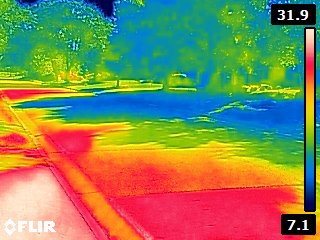2 things to consider when selecting the most appropriate species
When it comes to producing shade not all trees are created equal. But no single species is the best to use in all situations. You need to match the most appropriate species with the intended use of a place. A school playground, for example, is intensively used during spring and fall but is often underused during summer months. Trees that provide shade early in the spring and hold their leaves late into the fall will provide shade when school is in session and the kind of shade that they provide in the middle of summer is far less important. In contrast, many urban parks with playgrounds are used more in the summer when kids are on break from school. Trees that provide a heavy shade in mid-summer might be preferred in these locations, and whether or not they leaf early or late is not as important.
There are two main characteristics of trees that will have the greatest impact on your decision on how to provide the best shade for any given situation:
- leafing period; and
- density of the canopy.
There’s a table of this information that you can refer to in “Microclimatic Landscape Design”, a book that Terry Gillespie and I published with John Wiley & Sons, New York. Many trees are not particularly distinctive in either leafing period or density of shade, but a few are noteworthy.
Trees that tend to leaf later in the spring and drop their leaves earlier in the fall include:
- Catalpa speciosa
- Juglans nigra
- Tilia cordata
Trees that leaf earlier in the spring and hold them later into the fall include:
- Acer platanoides
- Aesculus hippocastanum
Trees that produce particularly heavy shade in summer include:
- Acer platanoides
- Fagus sylvatica
- Juglans nigra
- Tilia cordata.
Trees that have a particularly light shade in summer include:
- Gleditsia triacanthos inermis
- Carya ovata.
The list of trees in the book is far from complete. More studies need to be done to fill in the empty spaces in the existing list and test other trees. And of course there can be a lot of variation among individual trees of the same species depending on health and size. But by the very nature of evidence-based landscape architecture we have to use the best information available, even if it’s incomplete.
You'll notice that there are several non-native species on these lists. I encourage people to use native or non-invasive species whenever possible, especially when planting in or near a natural area. Acer platanoides is known to be an invasive species in southern Ontario but has one of the densest canopies and provides heavy shade. I would encourage its use only in situations such as highly-urbanized locations where it can provide important cooling of the urban heat island.
I walked around my neighbourhood and took thermal images of the shade created by different species of trees growing side by side. In the image above the coolest temperatures (dark blue) were in the shade of an Acer platanoides while right beside it the temperature of the asphalt in the shade of a Betula papyrifera (yellow/green) was warmer. The warmest surface temperatures (red, orange and white) were of asphalt in the full sun.
This image shows again the coolest surface temperatures (dark blue) in the shade of an Acer platanoides, warmer surfaces (green and yellow) in the shade of a Gleditisa triacanthos inermis in the foreground, and the warmest surface temperatures (red and white) were unshaded from the sun.
If you were designing an outdoor café that the owner wants to open early in the spring and stay open late into the fall you might want to select trees that leaf late and drop their leaves early so that the solar radiation can warm customers on cool days. Alternatively in designing a caféwhere the owner wants to focus on the summertime lunch crowd you might select trees that provide a heavy shade when in full leaf.
There are many things that need to be considered when selecting which tree to plant but make sure that you think about the leafing period and the density of the canopy, and how these characteristics will affect the long term use of the place.
References
Brown, Robert D. and Terry J. Gillespie. 1995. Microclimatic Landscape Design: Creating Thermal Comfort and Energy Efficiency. John Wiley & Sons, New York.
Brown, Robert D. 2010. Design with Microclimate: The Secret to Comfortable Outdoor Space. Island Press, Washington D.C.



